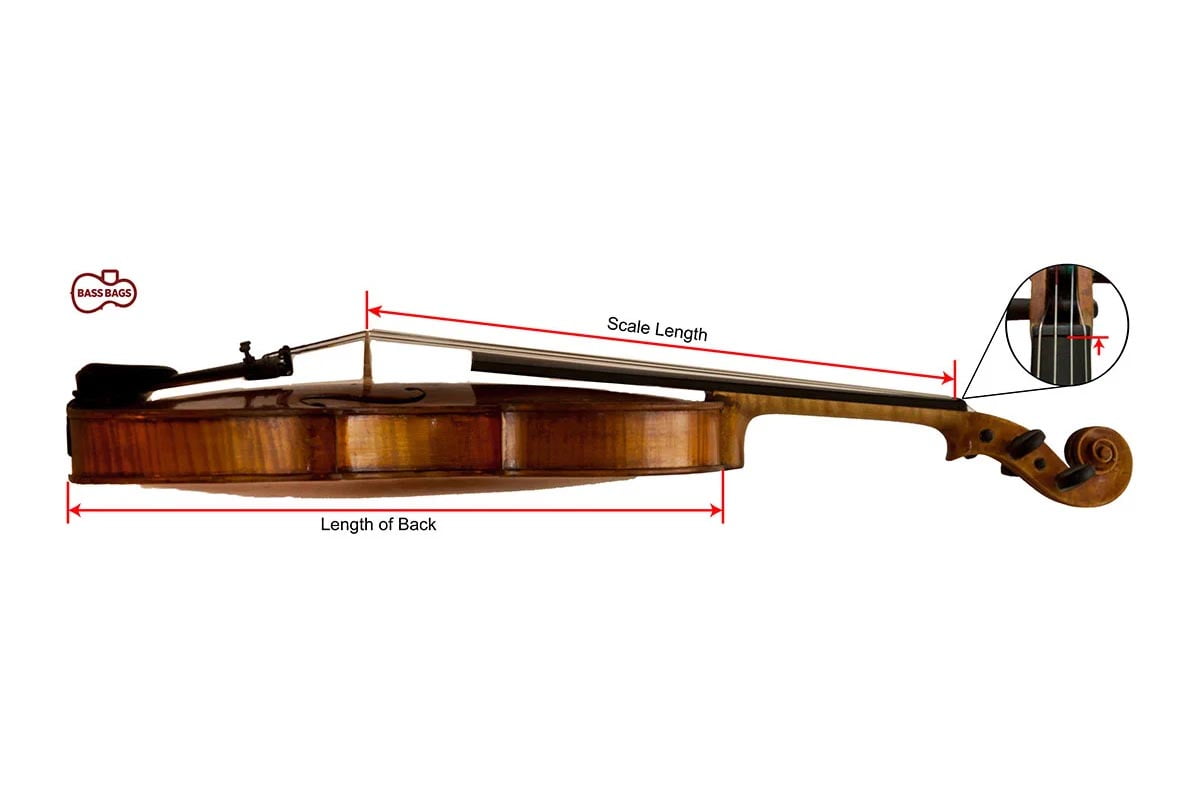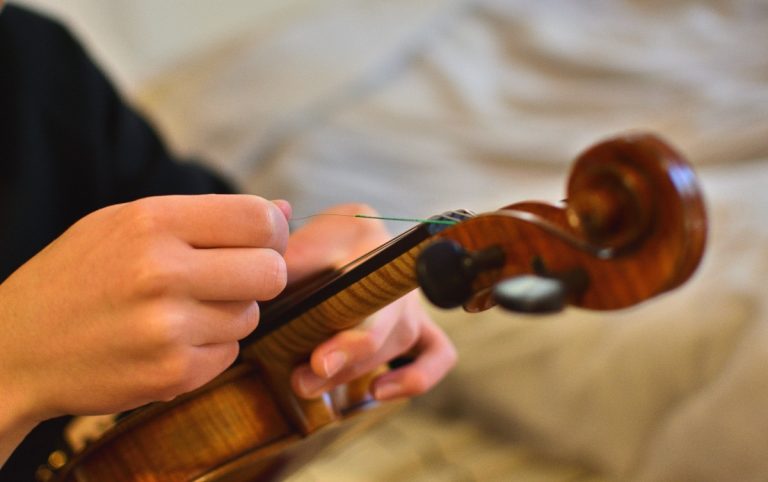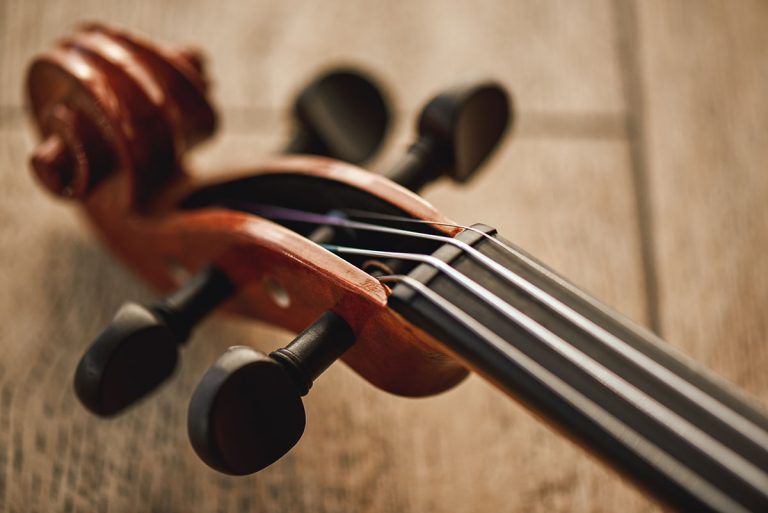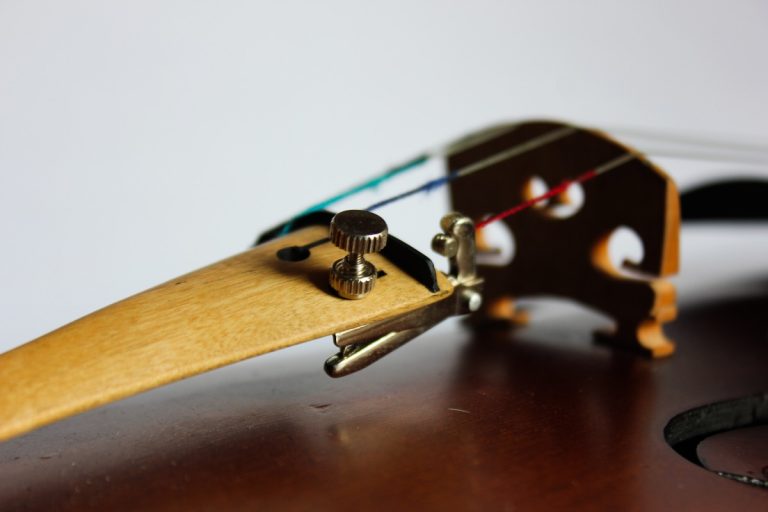How to Measure Your Violin to Determine the Size
Introduction – What Size is My Violin?
Knowing the size of your Violin is essential so that when you’re shopping for Violin Strings, Shoulder Rests and Cases, etc., you know what sizes of accessories to buy.
This guide will help you find or identify the size of your Violin by sharing the various techniques we use in the trade for measuring your violin’s size, including scale length and back length. These are the two most reliable methods to determine violin size accurately.
What and Where to Measure
Here is a diagram of a Violin labelled with the measurements used and where to measure to determine the Violin’s size.
Table Of Violin Measurements by Size
| Violin Size | Scale Length | Length of Back |
| 4/4 | 330 mm | 355 mm |
| 3/4 | 310 mm | 335 mm |
| 1/2 | 285 mm | 310 mm |
| 1/4 | 260 mm | 280 mm |
| 1/8 | 235 mm | 255 mm |
| 1/16 | 215 mm | 230 mm |
How to Measure Size by Scale Length
The scale length is the length of string that can vibrate between the top nut and the bridge. The top nut is the strip of ebony that the strings travel across between the pegbox and the fingerboard; it is detailed in the zoomed-in part of the above diagram.
To measure the scale length, use a tape measure or ruler to determine the distance from the underside of the top nut to the top of the bridge, as detailed in the diagram.
When using this measurement method, it is essential to check
- That the bridge is in the correct position on the imaginary line between the notches in the soundholes.
- That the bridge isn’t warped. The side of the bridge nearest the tailpiece should have a 90-degree angle with the Violin’s body.
How to Measure Size by Back Length
To measure your Violin’s back length, use a tape measure to measure the distance from the bottom of the back to the top of the back, as detailed in the diagram.
A common mistake is to include the heel of the neck, where the neck returns across the ribs of the Violin. You only want the measurement up to where the back meets the ribs.
Accuracy of Measurements
There is no absolute rule for the dimensions and sizing of Violins. When Violins were starting to be made, makers didn’t have an agreed global specification to work to. As a result, even with modern violins, there is some variance. If your measurements are not matching exactly with the table in this article, don’t worry; it’s not unusual; use the closest measurements to gauge your violin’s size.
In the trade, there are many size variants; for instance, you can have a big 4/4 size or a small full size.





